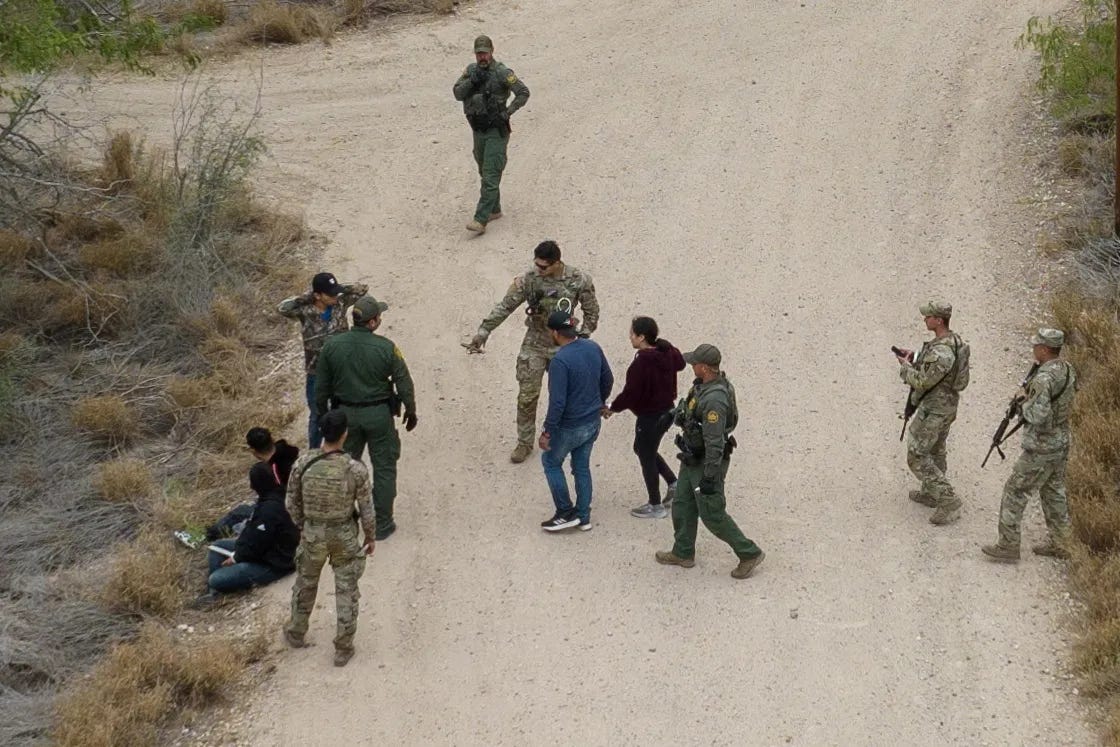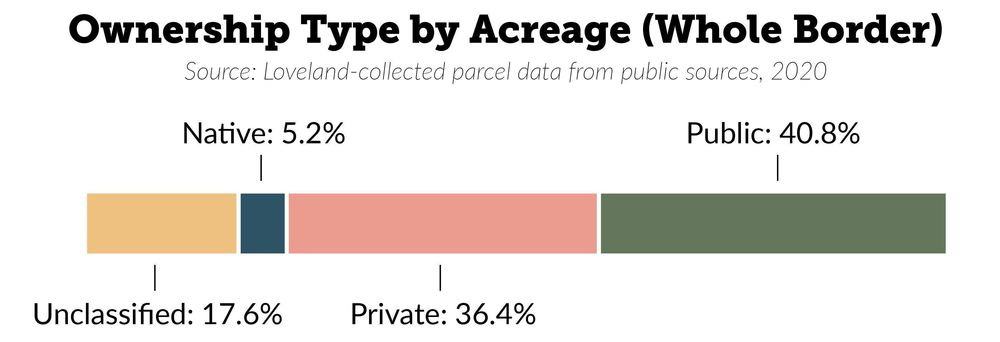Solving the Border
Policy Solutions Abound. What is the hold up?
From one administration to the next, whether Democrat or Republican, the situation at the Southern border of the United States continues to deteriorate. The current wave of illegal immigration, which has carried as many as 14 million people to the United States, began under the Trump administration and was only quelled by the COVID-19 pandemic. In light of this it is clear that neither mainstream party is capable of dealing with the border crisis and the American people must be presented with an alternative.
Nationalism is the only force that stands ready to defend the sovereignty and territorial integrity and therefore the demographic composition of the United States. The American public deserves an alternative to the failed two-party system and endless immigration - nationalists must be that alternative.
In this piece, we will present a short list of policy solutions that are effective against large-scale immigration, using examples from other countries and the experience of American institutions both past and present.
Mandatory E-Verify and the Hurdles:
We have written extensively about the benefits of mandating the E-Verify system. This system requires employers to check the ability of their prospective and current employees to work in the United States and has been very effective in the states where it has been implemented. States such as Arizona have retained a Western majority for a decade longer than the states that surround it, and many states in the Deep South, where mandatory E-Verify is common, have small Hispanic populations and retain demographics that reflect their historic norms.
Other states, such as Iowa, are currently working on implementing mandatory E-Verify, yet this process is lengthy and the agricultural lobby often pushes back against these efforts to protect the American nation.
In May of 2023, the Republican-controlled House of Representatives passed a law to mandate e-verify, but with cutouts so broad that the legislation, which died in the Senate, would have proven useless even if it passed. A last-minute amendment created an exception for agricultural workers, most of whom are foreign-born.
The agricultural lobby, which spends nearly $50 million a year in Washington, cannot be allowed to determine the economic and demographic destiny of the United States. Not least because the agricultural corporations paying for these lobbyists are not owned by the average American farm holder, but are more representative of Corteva Agriscience. Corteva is a major agricultural chemicals producer who even goes so far as to produce a podcast that advocates for mass immigration to the United States.
Border Barriers and the Barriers to Them:
Border barriers work, and this fact is indisputable. During the 2015 migrant crisis in Europe, the nationalist government of Viktor Orban constructed a border fence along the entire southern frontier of Hungary. This barrier, stretching across the border with Croatia and the frontier with Serbia drastically reduced the number of migrant crossings. The month before construction, in October 2015, nearly 140,000 people crossed the Hungarian frontier illegally and entered the European Union to claim asylum (usually in Germany or Sweden). After the construction of the barrier, the number of migrant crossings dropped over the next two months, and by January 2016 - a mere 3 months later - the number of illegal crossings had fallen to just 553.
In a similar case, the nation of North Macedonia constructed a border fence with Greece in November 2015, seeking to stem the flow of illegal Arab and African migrants into and through the country. Throughout 2015 the country had seen some 68,000 people cross its frontiers illegally and after the construction of the barrier fewer than 20,000 people are detected crossing a year. The Macedonian fence reduced border crossings three-fold.
Both of these nations, among others, were able to reduce illegal and irregular migrant numbers massively, and the United States government has an obligation to do the same. Yet they clearly have not done so. Ideological hold-ups make policy change difficult and only a nationalist outlook would allow for the changes necessary.
Only 46% of the land along the US-Mexico frontier is owned by the public (state, federal, tribal, and local governments). The remaining 54% of the land is held by private landowners corporate and individual and most have proven unwilling to sell their land to the Federal government.
The Bush administration initiated more than 350 eminent domain cases against private landowners in order to construct more than 700 miles of border barriers in the early 2000s. While most cases were successful it proved deeply unpopular. Instead of either forcing landowners out through an unpopular process or continually begging to purchase the land, a nationalist government could take multiple novel steps to secure the land necessary.
Offering more than the “fair market value'“ as required by eminent domain would certainly move most landowners to sell. A nationalist state could act as more of a developer than a state agency. Paying above market value for land, as a developer who seeks to build a subdivision or new store, and even splitting parcels so that the landowner could retain most of the land that is unnecessary for barrier construction.
These are just two solutions to the issue at America’s southern border. Even after the issue is addressed it will still be necessary to reverse decades of demographic change and transition from a Great Replacement to a Great Repatriation of all of those who have come to the West in recent decades.
Support White-Papers:
Zelle: whitepapersinstitute@protonmail.com
Buy us a coffee: https://www.buymeacoffee.com/wppi
Linktree: https://linktr.ee/wppi
Snail Mail: White Papers Policy, PO Box 192, Hancock, MD 21750







I would be surprised if landowners wouldn't build and patrol barriers if paid to do so. USGOV could pay a regular maintenance fee as well as create a variance for roads in and out of the property. The USGOV needs to establish a series of garrison forts along the border. The more remote the better. Bring some federal dollars into small towns along the border (if desired). The southern border is the new wild west and the cartels and smugglers the new Indians.